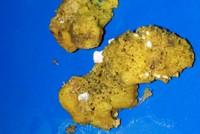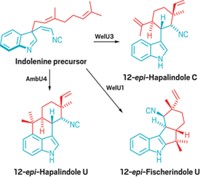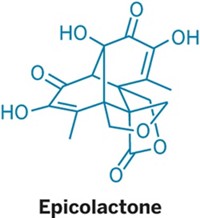Advertisement
Grab your lab coat. Let's get started
Welcome!
Welcome!
Create an account below to get 6 C&EN articles per month, receive newsletters and more - all free.
It seems this is your first time logging in online. Please enter the following information to continue.
As an ACS member you automatically get access to this site. All we need is few more details to create your reading experience.
Not you? Sign in with a different account.
Not you? Sign in with a different account.
ERROR 1
ERROR 1
ERROR 2
ERROR 2
ERROR 2
ERROR 2
ERROR 2
Password and Confirm password must match.
If you have an ACS member number, please enter it here so we can link this account to your membership. (optional)
ERROR 2
ACS values your privacy. By submitting your information, you are gaining access to C&EN and subscribing to our weekly newsletter. We use the information you provide to make your reading experience better, and we will never sell your data to third party members.
Synthesis
Following in a fungus's footsteps, chemists synthesize preuisolactone A in only 3 steps
Nature inspires short synthesis of complex natural product with 7 stereocenters
by Leigh Krietsch Boerner
September 23, 2019
| A version of this story appeared in
Volume 97, Issue 37
Building complexity is just about the most important thing when you’re making natural products. These molecules tend to have multiple stereocenters, and require elaborate multistep syntheses and catalysts to make in a laboratory. Chemists are always on the lookout for shorter, more efficient routes to natural products. Such advances could also improve methods for making drugs, agrochemicals, and materials. Now, Dirk Trauner and coworkers at New York University have synthesized preuisolactone A with a 57% yield in just three steps (J. Am. Chem. Soc. 2019, DOI: 10.1021/jacs.9b08892). The compound, which can be isolated from the fungus Preussia isomera, is a racemic mixture with seven adjacent stereocenters. Normally, making a molecule of this complexity would require a 20-step synthesis, Trauner says. Inspired by biosynthetic pathways for similar natural products, the group was able to show that the molecule comes together in three oxidative steps starting with a pair of achiral polyphenols. The researchers also showed that preuisolactone A is likely a polyketide and not a terpenoid as previously thought. The work shows the power of oxidative cascades to build very complex natural products, says David Sarlah, an organic chemist at the University of Illinois at Urbana-Champaign. “It does not get any shorter and sweeter than this,” Trauner says.





Join the conversation
Contact the reporter
Submit a Letter to the Editor for publication
Engage with us on Twitter